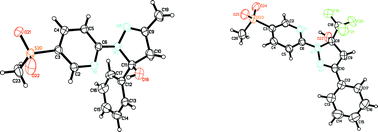New hydroxy-pyrazoline intermediates, subtle regio-selectivity and relative reaction rate variations observed during acid catalyzed and neutral pyrazole cyclization†
Abstract
Arylhydrazines 4 and 1,3-dicarbonyl compounds 5 react to form

* Corresponding authors
a
Chemical Research & Development, Pfizer Inc Global Research & Development, Eastern Point Road, Groton, USA
E-mail:
timothy.norris@pfizer.com
Fax: +860 686 5340
Tel: +860 441 4406
Arylhydrazines 4 and 1,3-dicarbonyl compounds 5 react to form

 Please wait while we load your content...
Something went wrong. Try again?
Please wait while we load your content...
Something went wrong. Try again?
T. Norris, R. Colon-Cruz and D. H. B. Ripin, Org. Biomol. Chem., 2005, 3, 1844 DOI: 10.1039/B500413F
To request permission to reproduce material from this article, please go to the Copyright Clearance Center request page.
If you are an author contributing to an RSC publication, you do not need to request permission provided correct acknowledgement is given.
If you are the author of this article, you do not need to request permission to reproduce figures and diagrams provided correct acknowledgement is given. If you want to reproduce the whole article in a third-party publication (excluding your thesis/dissertation for which permission is not required) please go to the Copyright Clearance Center request page.
Read more about how to correctly acknowledge RSC content.
 Fetching data from CrossRef.
Fetching data from CrossRef.
This may take some time to load.
Loading related content
